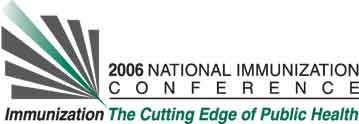Julie A. Boom, Academic General Pediatrics, Baylor College of Medicine, 6621 Fannin FC240, Houston, TX, USA and
Cynthia S. Nelson, Immunization Project, Texas Children's Hospital, 6621 Fannin FC240, Houston, TX, USA.
Learning Objectives for this Presentation:
By the end of this presentation participants will be able to:
1. Understand the impact RITE had on provider immunization behaviors and immunization coverage levels
2. Be aware of the costs associated with and the cost-effectiveness of implementing RITE
Background:
In order to improve immunization behaviors of healthcare workers and to increase immunization coverage levels of children ages 12-23 months in Houston, collaborators developed the Raising Immunizations Thru Education (RITE) pilot program. RITE is a peer education program similar to the Educating Physicians in Their Communities (EPIC) program in Pennsylvania. Trained physicians, nurses and office managers traveled to local providers' practices to deliver an education session aimed at improving immunization behaviors and coverage levels in their practices. A total of 189 pediatric and family medicine practices in the Greater Houston Metropolitan Area chose to participate in the RITE study. Within a year, RITE trainers delivered 84 presentations to a total of 640 participants in the intervention group.
Objectives:
To create a peer based education program for physicians, nurses and office managers in pediatric and family medicine practices with three goals:
1. To increase immunization coverage levels
2. To provide knowledge and tools necessary to develop the best strategies to increase immunization levels in each office
3. To develop an immunization action plan based on the practice's needs
Methods:
We will discuss in detail the components of the RITE program, including: (a) the methods for conducting the program and (b) the evaluation of RITE, which occurred in three parts: evaluation of provider immunization behaviors, immunization coverage levels, and cost-effectiveness.
Results:
Immunization behaviors improved, and coverage levels for children 19-23 months of age marginally increased for the intervention group. We will report detailed results of the data analysis and lessons learned throughout the project.
Conclusions:
Peer academic detailing affects provider immunization behaviors and childhood immunization coverage levels.
See more of Posters
See more of The 40th National Immunization Conference (NIC)

